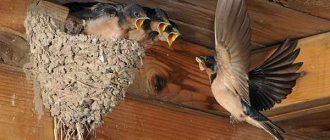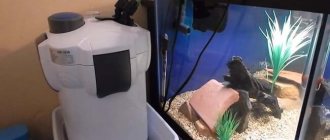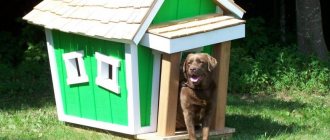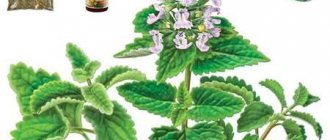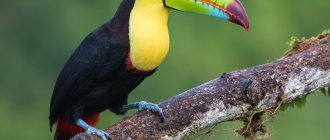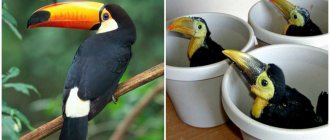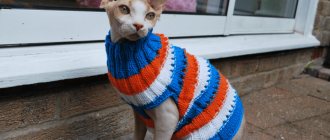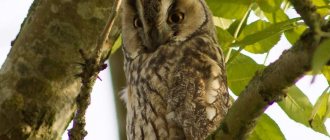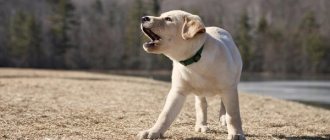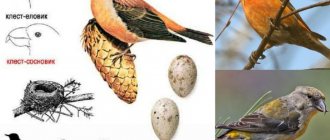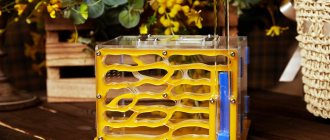On about a third of wasp extermination trips, we encounter situations where there are really a lot of wasps in the area; the owners even try to track their movements and find the nest, but the nest itself is not found simply because they do not know what it might look like. Usually people look for characteristic spherical wasp nests that they saw somewhere in a photo, in some films, or even cartoons, similar to something like this:
...and if they don’t find exactly such a structure, they assume that there is no nest on the site at all.
And then one of our guys comes and shows the nest, which looks completely different from the imperfect photos on the Internet, and definitely not like in the Disney cartoons. The nest is destroyed, and no wasps remain in the area. But so that you understand what such a nest looks like, we will show you such examples and describe various unique cases. As our practice shows, wasps are great masters of settling in places where a person will not look until the last minute, and where their nest will look like... will not look like anything at all!
But first, the classics:
How wasps build a nest
To obtain such a thin, durable material for construction, the wasp lands on a wooden surface. A fence, roof, barn wall or any building, wood chips, sawdust or wood will do. The insect releases saliva, which softens the top layer of wood. Then it scrapes off the fibers with its powerful jaws. Having collected a sufficient amount of this peculiar building material, it flies to the place where the future nest will be.
this woody mass is additionally chewed, simultaneously moistened with saliva. The result is not just pieces of wood, but a viscous sticky mass. The insect “spits” it onto the edge of the nest and stretches it. The mass hardens quickly, and a thin, durable partition is obtained. Moreover, it can be as thick as paper or as thick cardboard.
The construction of the house begins from the middle, with individual cells. This part is the strongest, there is a uterus (queen) of wasps with eggs. To build the middle part, it is not paper that is used, but small slivers of wood that are held together with saliva.
Nest construction starts with 1 cell.
New ones are being built nearby.
While there are no worker wasps, the queen builds the nest herself. Gradually the nest grows
There are more and more new cells.
This is roughly how the construction of a wasp's nest occurs.
The next layers of cells are built up around the middle. They are located horizontally, on several floors. Every 3-6 rows of wasp honeycombs are separated by small corridors. The interesting thing is that all the cells face downwards, in one direction. But wasp honeycombs are not the same: there are cells for larvae, storage rooms, and a room for the queen.
A special feature of the aspen house is that it is constantly being built on, and insects often take material for the outer layers from the middle. Unlike bees, they do not clean their home, but simply leave the polluted cells.
Traps
Another good way to combat wasps is to use traps; their fundamental difference from the previous method is that the bait does not have to be poisoned.
You can purchase such a device in a store or construct it yourself if you follow the instructions below:
- To make it you will need a large plastic bottle, the recommended volume is 1.5-2 liters.
- It is necessary to twist the roof of the container and cut off its upper part by a third with a knife.
- Bait is poured inside, this again can be beer with sugar or fermented jam.
- The cut off upper third of the bottle is inserted into the lower part; this must be done with the neck down.
- The container with the bait is suspended from a tree; in the future, it only needs to be updated once every few days, since wasps caught inside, due to a number of their instincts, will not be able to find their way out into the wild.
When does nest construction begin?
Construction of the hive begins in early spring. The young queen chooses a place, creates a base - a small leg, which she attaches in a secluded place. The first cells are set up around it, at first a small number. Then it lays eggs in them. After a month, the workers hatch and actively take on the further construction of the hive. After this, the queen is engaged only in raising offspring.
The number of worker insects in a wasp swarm is growing rapidly, so the hive is also built quickly. If the swarm is large, it can double in size in a few hours. But this depends on the needs of the swarm; sometimes the queen is content with a small size. Construction is progressing in stages.
- After the first worker wasps hatch, they begin to gradually build new cells around the middle, where the queen lays eggs.
- The wasp's home increases in depth and grows to the sides. Gradually takes the shape of a bowl. The hole remains at the bottom.
- Around the end of June, insects begin to build around the second part of the sphere, repeating its shape.
- Gradually, the internal cells are removed, and this material is used to build the outer sphere.
- By the end of summer, construction ends. Young queens fly out and look for a secluded place for wintering.
This device creates a special climate inside. The wasp hive always maintains the same temperature and humidity.
Development cycle [edit | edit code ]
Initially, the construction of the nest and feeding of the larvae is carried out exclusively by the female who founded the colony. First, the larvae feed on the secretion secreted by the female’s thymus gland, and later on insects. From the first larvae, working individuals develop, which are smaller in size.
Working individuals complete the nest, and also feed new larvae and the female. The worker wasps carry the caught and chewed insects to the nest and feed them to the larvae and the female. The larvae, in response to feeding, regurgitate droplets of liquid licked by the wasps. This mechanism ensures the development of ostrophallaxis—the exchange of food within individuals of the same colony.
Polyethism in paper wasps is weakly expressed. Working individuals perform various functions in the nest. If you remove the female, they begin to lay eggs in her place.
In one season, the number of wasps in one nest increases significantly - from several tens to several hundred individuals. Most of them do not survive the winter.
Closer to autumn (in temperate latitudes - in August), males and females emerge from special large cells. At first they are in the nest. Having grown stronger, they fly out of the nest and mate. The males soon die, and the females overwinter and establish new colonies in the spring. In the fall, before the cold weather, the workers stop feeding and destroy the remaining larvae and pupae. Working individuals do not overwinter and die. Some tropical wasp species can have perennial colonies.
Where do wasps nest?
When the queen is looking for a suitable place for her future home in the spring, she makes sure there is food and building material nearby. Most often, wasp nests can be found in the following places:
- on the branches of trees or bushes;
- in attics;
- under the roof of bathhouses, sheds, garages;
- in the corner of the balcony;
- cracks between bricks, logs;
- under window sills, cornices, drain gutters;
- in a hollow tree or in an old stump;
- abandoned birdhouses or bird nests.
Please note that these insects like to settle close to humans. They are attracted by the smell of food and many dry crevices. Wasps can chew through wooden floors and even cement. But sometimes the uterus does not find a suitable place. Then she can make a house even underground.
From unusual places: an old Chevrolet turned into a giant nest of wasps. With such an anti-theft feature, you don’t even have to close the doors.
Construction material
Wasps are excellent builders, and they select the best material for their houses - wood. Everything that wasps make nests from (pieces of trees, stumps, wooden elements of various buildings) is pre-treated by the insects with their own saliva.
"Tree house"
After this treatment, the finest wood fibers are easily scraped off using the powerful jaws of the wasp. The collected material is sent to the wasp construction site, where it once again passes through the insect’s jaws and is moistened with a special sticky secretion.
The wasp deftly stretches the resulting mass into a thin plate, having previously attached it to the edge of one of the cells of the nest. It is noteworthy that the thickness of such a wall can vary from almost transparent to quite dense, reminiscent of cardboard in texture.
What does a wasp's nest look like inside?
The size of a wasp hive may vary, but the shape is always the same. They resemble an egg with a hole at the narrow end. Moreover, they are almost always located so that the exit is directed downward. Sometimes the dwelling is placed horizontally, then the hole is directed to the side. If the queen has made a home in the ground, the exit will look up.
If you're wondering what the inside of a wasp's nest looks like, you can see the photos at the end of the article. Or, you can find the abandoned one and cut it up. But first it is important to make sure that the insects have really left it.
Usually the hive is no larger than a large apple. But some can grow to the size of a ball or even larger. There are giant ones - more than a meter in diameter.
Destruction by insecticides
The destruction of wasps using special preparations - insecticides, is one of the most effective, modern and widespread methods of combating these insects.
When choosing this method, you must adhere to the following algorithm of actions:
- All modern insecticides have a water-soluble form ; in order to obtain a working mixture, they must be mixed with water, but this is done strictly in accordance with the attached instructions.
- Prepare a polyethylene bag with a dense structure; its dimensions should be such that the entire wasp’s nest fits inside. 200 ml or more of the diluted solution is poured into the bag.
- Place the bag on the nest; this is done with sharp and quick movements so that the angry insects do not have time to fly out and attack the offender. It is tied at the top with rope, tape or tape to prevent wasps from leaving the trap.
- Usually all the inhabitants of the nest die after 2-3 days, but first it is better to tap the bag with some object to make sure that there are no living insects left inside that can attack a person.
Today, the market offers a wide range of different drugs designed to kill wasps.
The most effective and proven positives are the following types of insecticides:
Tetrix is quite expensive, but it is still very popular due to its high effectiveness. Sold in cylinders with a capacity of 250 ml, from which you can get 2-3 liters of the working mixture. The cost is about 1,200 rubles, often sold in liter canisters, which cost approximately 5,000 rubles.
Diazinon is not only a good way to kill wasps, but is also used to prevent the appearance of other insects, and is completely safe for most types of domestic animals. The price for a 1 liter container is about 1000 rubles.
Sinuzan is most often used to destroy nests indoors, since this drug can also remove other insects living at home, including cockroaches and flies. The cost of a 5-liter canister is about 8,000 rubles.
Karbofos is an inexpensive and at the same time very effective drug that not only destroys individuals of any age, but also kills larvae. The cost of a 5-liter canister will be only 2500-3000 rubles; you can also purchase a small package, which will cost no more than 30-50 rubles.
Lambda Zone will destroy not only wasps and their larvae, but also all insects in the next 100 square meters. One 50 ml package is enough for exactly this area; its price is only 600-700 rubles.
How many wasps in one hive
Wasp hives come in small and large sizes and can accommodate different numbers of insects. Sometimes the queen wasp makes a small nest, about the size of an apple. A small swarm of wasps grows slowly, so there are few insects. But some nests can be home to hundreds of thousands of wasps. The largest hives can contain up to a million individuals.
The swarm grows mainly due to worker wasps. There are most of them, they concentrate around the uterus and continue construction. There is a strict matriarchy in the wasp colony. There are much fewer males than females; males do not have a stinger, but have very long antennae.
As for giant colonies, here's another video for you: a huge nest in a barn
Correction: in the video they destroy a nest of hornets, but they are related to wasps. To destroy such large colonies, it is better to involve specialists and do without amateur efforts.
How long do wasps live in a nest?
The life of a wasp swarm in the hive continues all summer. Starting from spring, when the queen begins construction, and almost until the end of summer, the growth of the family continues. By July the number of individuals increases. By the beginning of autumn, the activity of insects decreases, they weaken and die more and more often. By the onset of cold weather, several young queens remain and find a place to winter.
To get a more complete picture, I recommend reading the article about wintering wasps
This order of life of a wasp swarm continues constantly. In autumn, the wasp's nest becomes empty. And the next year the uterus begins building a new one.
Kinds
Sand (burrowing) wasps
This is a group of solitary predatory wasps 2–5.5 mm long. Insects have a small head, straight antennae and long legs. The color of most representatives is black with a red stripe or spots on the abdomen. There are black species with yellow or white stripes. The pronotum of all sand wasps resembles a roller. The most famous burrowing species are: Larra anathema wasp, Ammophila wasp, Philanthus .
Road wasps
Insects with an elongated black body 1.5–4 cm and long curled antennae. There are red or yellow spots on the abdomen. The wings of road wasps are darkened: black, black-blue or brown. Road wasps are active and constantly moving in search of prey.
German wasps
They are similar in appearance to the common wasp, but smaller in size. The body of an adult is 12–15 mm in length. The tip of the abdomen of this insect is not black, but yellow. The colony size is smaller than that of the common wasp.
Floral
Small insects no more than 1 cm in length with a black and yellow abdomen. In the ground, queens most often build single nests from a mixture of clay, sand, moistened with saliva.
Scolia
Representatives of this family are solitary wasps. Depending on the species, insects grow up to 1–10 cm. The body of many scolias is densely covered with hairs. The color is black with yellow, white, red stripes and spots.
Wasp nests in the ground
This article would not be complete without earth wasps. Yes, there are such people. They settle in old mole holes or dig their own. Fortunately, they have a talent for this. Finding an underground nest is more difficult than usual, but inside it is exactly the same - paper and cells for food or larvae. There is no honey there either. But there is this video about underground flyers:
God forbid you step on something like this. You will run very fast.
There is a separate article about wasp honey, but looking ahead, I will say right away that they are lousy honey makers. More precisely, none at all.
Lifestyle
The rules for the existence of hornets in nature are very similar to those of bees and ants. In order to survive during the cold winter and give birth to offspring every year, insects have to sacrifice someone and something. They sacrifice males, who die soon after mating. This way resources are not wasted on already “useless” individuals.
After all, in the hornet family, the females are the main ones. Therefore, they must prepare well for hibernation, survive it, and in the spring become the founder of a new colony. The uterus needs a large amount of protein to produce eggs and develop ovaries. In order to successfully overwinter, it eats very richly and accumulates a fat body.
Mating Features
The greatest activity in the hornet family is observed at the end of the warm period of the year, namely the end of August and the beginning of September. By this period, individuals of both sexes become adults. They all leave their home, swarm and mate. Thus, mating occurs before the onset of cold weather. Female hornets spend the winter pregnant.
Males die soon after mating. Females lead a solitary lifestyle. They feed heavily, and between meals they fly around the nearby territory in search of a safe place for winter shelter. Overwintering of a pregnant female hornet, which falls into suspended animation, is possible only in a secluded place where enemies and cold winds will not find her.
Wintering conditions
Crevices in rocks, tree hollows, shelters under stones and fallen trunks, and small cavities on the outside of unheated buildings or houses are well suited for this. There is no need to be afraid that the female will hide inside a human house. There's a good reason for this. When cold weather sets in, when the air temperature drops below 0 0 C, all water freezes.
But the water in the hornets does not freeze. This is due to the fact that in the body of insects, water is replaced by glycerol. It does not freeze, but it slows down all life processes. This way, the glycerin cannot turn into ice and rupture the insect cells. If the hornet warms up prematurely, it will die during the next cold snap.
When the female hides for the winter in a heated human house, the warm air temperature will contribute to her premature awakening and the natural need to build a nest. If she manages to hide in a house from human eyes, then it will be very difficult for her to look for material to build the honeycomb of her “house”.
When she manages to build a nest, she will not be able to find enough food in the house to feed her offspring. Thus, she will doom him to certain death. Therefore, female hornets do not choose heated human houses for wintering.
A lot of female hornets die during harsh winters with little snow, as well as in the presence of winter thaws. If the female does not manage to hide well, she will become prey to various birds or small predators. Therefore, a significant number of hornets do not survive until spring.
How to find a wasp's nest
Wasps can be useful for the garden and garden, as they destroy small insect pests and pollinate plants. Therefore, if their proximity does not cause disturbance, it is better not to touch them (the case is very rare, almost unreal). But these insects can be very aggressive, often attacking a person for no apparent reason.
If you notice a lot of wasps near your house, it is better to look for their habitat and destroy them. This is especially important if the family has small children or allergies.
They are attracted by the smells of food, but these insects do not fly further than 100 meters from the nest. Therefore, it must be found. To do this, inspect all secluded places, especially under the roof, eaves, and window sills. They like to settle in places where people rarely visit, where there are a lot of things. You need to look for them in sheds and garages.
If you can’t figure out where they live, you can try to lure them out. Workers carry food for the larvae. Therefore, you can put a strong-smelling bait in a visible place. Something sweet or a piece of smoked fish is best. You need to watch it: insects will fly from the bait to the nest. The paths of their movement will help to calculate the location of the hive. These comrades managed to find and destroy the hive. Quite an interesting video in which nomadic marabunta ants found and are destroying a wasp hive. This whole swinging rope is interlocking ants. This is how the bridge turned out. If you look closely, you will see how they drag larvae and eggs from the nest. The wasps themselves, as I understand it, have already been driven away or destroyed.
Well, to conclude our story, a few photographs of huge wasp nests.
Poisoned baits
You can also use poisoned baits to exterminate wasps; when using them, you will have to wait longer for the results, but this option is the safest in all aspects, and also does not require any skill for successful implementation.
To poison insects, you must adhere to the following instructions:
- As bait, it is best to use beer, to which additional sugar is added, or fermented jam , which has an aroma attractive to wasps. It is not recommended to use honey, since bees that do not pose a threat to humans will also react to it.
- Add any toxic substance to the bait ; it can be one of the types of insecticides or just boric acid.
- The bait and the poisonous substance must be mixed well with each other, then placed on a plate and placed on an accessible and open surface. It is best to choose a place somewhere in the trees or where children or pets cannot reach the poisoned bait.
- Renew the poisoned bait every few days ; this must be repeated until the insects finally disappear from the area where they were planned to be hatched.
Wasp nests photo
In reality, there is no treasure or honey inside. Nothing interesting at all. It is better to destroy such finds late in the evening, so that all the inhabitants of the nest are already at home. How to do this correctly, with the help of what chemicals and devices, read the article: How to get rid of wasps in the house
That's all for me.
Look at the photos of wasp nests and, probably, it will be better for you not to find anything like this at your dacha. A small nest, the size of a tennis ball, but its inhabitants are capable of causing a stir.
If you don’t notice it, it will gradually grow and there will be more wasps in it
It’s better not to go into a wasp’s nest with your bare hands, who knows how many there are there.
Visit your dacha more often, check and destroy any wasp nests you find, otherwise you might be in for a surprise like this
Another huge wasp nest. Not the most pleasant find either.
But someone once found such a nest of wasps in their barn.
Inside the wasp hive there are all sorts of husks, remains of honeycombs and paper. Burns fast and fun. The creepiest wasp nest I've ever seen. I hope that the author of the photo cut out this face before taking a photo of it.
Security measures
As already mentioned, destroying a nest and the wasps inhabiting it is a rather dangerous undertaking, since if something goes wrong in this process, then a person will be confronted by a large number of aggressive insects who want to protect their home.
For this reason, it would be a good idea to take care of some security measures; below are some important tips related to this issue:
- Wear clothing made of thick fabric so that insects cannot sting through it. It is highly recommended to have a hood that will additionally protect your head.
- Gloves must be worn on your hands; varieties made of leather or thick rubber are best.
- The face should be covered with a special mosquito net mask, since bites to this part of the body are considered the most dangerous.
- Have pre-prepared ice, a tourniquet and anti-allergic drugs, for example, suprastin, which will be needed if the wasp does manage to sting a person.
South Polybia
The wasp family includes many species. These insects have a very wide habitat. The species Polybiinae Occidentalis (Polybia Occidentalis) is found in the southern states of the USA, Mexico and northern Latin America. These wasps are surprisingly similar in habits to hardworking bees. These insects are not just their hairy bodies. They also collect, digest and store flower nectar in honeycombs. And the question of whether there is wasp honey can be answered with confidence in the affirmative. The Yucatan Indians ate the product of processing nectar from the nests of Polybia Occidentalis long before their arrival. However, the American aborigines did not breed apiaries. They simply collected honey from wasp nests. This product is not as sweet as bee, but still tasty and nutritious. By the way, there is much less honey in the nest. Perhaps because in the tropical climate, Southern Polybia does not need to accumulate it in reserve.
Mechanical disposal
How to remove a beehive from a balcony? What to do if wasps have built a nest under the roof? To do this, there are several effective methods that can be used to quickly destroy a wasp nest and remove them from the house. Prevent these insects from coming back. First, you can protect yourself from the harm they can cause.
Hands can be protected with long rubber gloves, and clothing should be tight and as closed as possible. You can protect your face with a special beekeeping hat with a mesh, or come up with your own homemade version.
If it is noticed that wasps make their home in the spring, early summer, then it is not recommended to debug their destruction until later, when their colony becomes numerous and it will be difficult to find out how many wasps are in the nest.
Fire
Fire should only be used as a last resort. Everything is done quickly and efficiently. Wear protective clothing, wait until dark, take a bucket, kindle, matches, and approach the nest from a safe distance. When you are completely sure that these insects are sleeping, you can begin to neutralize this colony.
To carry out everything safely, you can take an unnecessary rag, throw it over the cocoon, throw it into a bucket, quickly set it on fire, and then move some distance away, since some individuals can fly out and behave aggressively.
Water
They remove the wasp nest using water, mainly on the balcony. There are two ways to do this: the first method requires boiling water, the other you can simply put plain water in a bucket. You can throw a plastic bag over it and destroy the hive in water by immersing it completely, while pressing it down with something heavy so that it does not float up and the wasps do not get out.
Everything should be done quickly. You cannot leave these insects in the bag for a long time - they can chew through the polyethylene and get out. It is best to remove this bucket from the house immediately.
Traps
How to destroy a wasp nest under the roof? This is very difficult to do with the help of fire, water, access to it is difficult. Then you can destroy the wasp hive using special traps. There are such options on sale, or you can make them yourself. Using this method, you can lure them out of the hive and destroy them by falling into a prepared trap.
What to do if wasps have built a nest under the roof - use this ideal option. It won't be hard to do it yourself:
- To do this, prepare a clean plastic bottle.
- Its neck needs to be cut off along with a small part of the bottle, placing it in it with the back side.
- To prevent the neck from falling inward, you can secure it to the bottle with tape.
- Wipe the walls of the trap with sunflower oil so that individual individuals cannot get out.
It is necessary to place bait in this trap, which will attract wasps to it by the smell carried around. In early spring, it can be prepared from meat waste and offal, but it is worth remembering that such a “delicacy” has an unpleasant odor. In summer and autumn, you can pour sweet syrup into a bottle, which attracts wasps into it.
Don't use honey - it will attract bees. The bait in the trap must be changed regularly, washed, filled, and filled with new bait. As they decompose, dead individuals release an odor that repels the living.
It is worth remembering that catching all the individuals is difficult, time-consuming, and unsafe, but if you manage to lure the queen into this trap, then it will be easier to destroy the colony, and removing a wasp nest on the balcony will be much easier.
It can only be lured in early spring - it is not so active or aggressive. There are special traps on sale that have poisonous bait. It needs to be changed as it becomes filled with insects. Due to the chemicals it contains, it must be hung away from your own home.
Vacuum cleaner
There is a simple option - remove the hive using a vacuum cleaner. This can only be done if the vacuum cleaner is a washing model. Pour soapy water into the reservoir, make sure that the hose is long enough and the grille is shallow, which will prevent insects from flying out.
Carefully bring the end of the hose to the hole in the socket and turn it on. If they get into water with soap, it will be difficult for them to get out and they will die there. Before you remove a wasp's nest in your dacha, be sure to make sure that no one is left there, all its inhabitants have died.
External differences of insects
In most cases, comparisons of different insects begin by examining their appearance. It identifies certain features that are characteristic of a particular individual. Based on these characteristics, you can easily determine what species a creature belongs to.
Wasps
A wasp is a stinging insect of the order Hymenoptera. There are dozens of species of these creatures, which are divided into two broad categories: solitary and social wasps. The former prefer to live as hermits and rarely build nests for themselves. Social insects create families, the number of individuals in which can exceed 1,000.
Traits characteristic of most wasp species:
- size – from 2 to 5.5 cm;
- the body structure is distinguished by the presence of a waist;
- elongated body shape;
- the body is smooth and covered with many hairs;
- bright yellow-black color;
- striped posterior segment of the body;
- the presence of five eyes (2 lateral and 3 vertex);
- smooth and short sting.
Executioner wasp: bite and its consequences, where it lives and what the insect looks like, read more in this article.
Bees
The bee is a honey-bearing insect belonging to the suborder Stalked-bellied and the order Hymenoptera. More than 20,000 species of these creatures live in nature, which can be found on all continents except Antarctica.
Appearance Features:
- the size of individuals is from 2.1 to 39 mm;
- a shaggy body that does not have a pronounced transition from the chest to the abdomen;
- pale color with black and yellow stripes;
- the back and paws, covered with many hairs, are painted black;
- long proboscis (1.7 mm);
- short antennae consist of 12–13 segments;
- two pairs of wings (the front ones are longer than the back ones);
- the sting is smooth, with a small notch at the end.
Hornets
Hornets are a genus of large insects from the family of Foldoptera wasps. They live in the northern hemisphere, but are also present in small quantities in the southern hemisphere. On the European continent, only the common hornet is found, which has been able to adapt to harsh environmental conditions.
External differences:
- body length – up to 55 mm;
- color – black and yellow stripes (sometimes there are orange or brown individuals);
- wide crown of the head;
- the abdominal cavity at the back of the waist is slightly rounded;
- two pairs of long wings are located along the back;
- three regular and 2 compound eyes;
- the jaws are colored black, orange or brown;
- the sting is smooth and hollow inside.
bumblebees
A bumblebee is an insect from the family of True bees. Biologists know more than 30 species of these creatures. The ability to adapt to new environmental conditions allows bumblebees to thrive on all continents except Antarctica. They live not only on flat terrain, but also in the mountains.
The main differences between the bumblebee and other hymenopteran insects:
- bright color consisting of red and brown stripes;
- the body is covered with a large number of long hairs;
- size from 7 to 28 mm;
- shiny hind tibia;
- the abdomen is not tucked at the apex;
- presence of the sixth abdominal sternite;
- small transparent wings;
- short hollow sting.
Interesting! Bumblebees have a unique ability to regulate their body temperature. This helps them tolerate cold well and cope with extreme heat.
